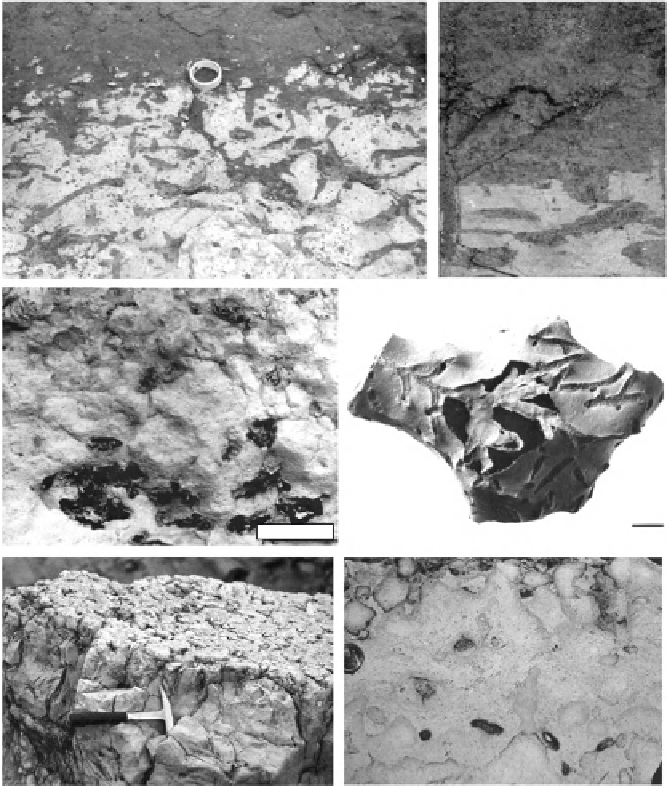Environmental Engineering Reference
In-Depth Information
A
B
1 cm
~20 cm
C
D
1 cm
10 cm
E
F
~4 cm
FIGURE 8
Ichnofabrics and trace fossils associated with the firmground
Glossifungites
and hard-
ground
Trypanites
ichnofacies in chalks. (A) Well-defined robust firmground
Thalassinoides
across
a coplanar sequence boundary-transgressive surface (type 1 firmground) marking the contact
between the Maastrichtian Prairie Bluff Chalk below and sandy glauconitic marls of the Danian
Clayton Formation above (western Alabama). (B) Type 1 firmground
Thalassinoides
marking an
Eocene transgressive surface bounding diatomaceous chalk (below) and glauconitic sandy mud
(above), ODP core, site 1073, Leg 174A, New Jersey margin. (C) Turonian chalk succession
exposed near Normandy, France, showing the transition from soft chalk characterized by the
Zoophycos
Ichnofacies to nodular chalk marking an omission surface with the
Glossifungites
(type 2
firmground) and
Trypanites
ichnofacies (topmost part of the photograph). Flint nodules in the lower
part preferentially nucleated beneath the omission surface in and around large
Thalassinoides
(
from
Ekdale and Bromley, 1984a
). (D) Flint nodule from Danish chalk nucleated in or around a
Thalas-
sinoides
branch juncture and preserving pelletal fill fabric of
Chondrites
on its exterior (
from
Bromley and Ekdale, 1984b
). (E) Bored hardground surface, Cretaceous chalk of Normandy, France
(
from
Scholle et al., 1983
). (F) Polished slab of Cretaceous chalk from southern England with
multiple phosphatized and glauconitized, bored hardground surfaces
(from
Scholle et al., 1983
).











Search WWH ::

Custom Search